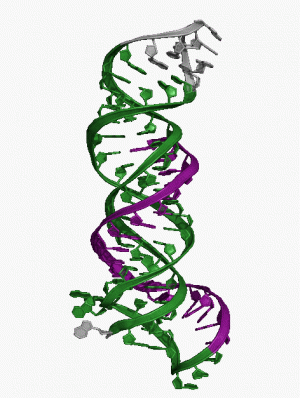Every high school biology student knows the structure of DNA is a double helix, but after DNA is converted into RNA, parts of RNA also commonly fold into the same spiral staircase shape.
In a literal scientific twist, researchers are finding examples of a third strand that wraps itself around RNA like a snake, a structure rarely found in nature. Researchers recently have discovered evidence of a triple helix forming at the end of MALAT1, a strand of RNA that does not code for proteins. Yale postdoctoral fellow Jessica Brown and her colleagues working in the labs of Joan A. Steitz and Thomas A. Steitz describe the bonds that maintain the structure of a rare triple helix.
This extra strand of RNA, which is seen in the accompanying movie, prevents degradation of MALAT1. The formation of a triple helix explains how MALAT1 accumulates to very high levels in cancer cells, allowing MALAT1 to promote metastasis of lung cancer and likely other cancers.
The work is published in the journal Nature Structural and Molecular Biology.
More information: "Structural insights into the stabilization of MALAT1 noncoding RNA by a bipartite triple helix." Jessica A Brown, et al. Nature Structural & Molecular Biology (2014) DOI: 10.1038/nsmb.2844. Received 25 March 2014 Accepted 21 May 2014 Published online 22 June 2014
Journal information: Nature Structural & Molecular Biology , Nature Structural and Molecular Biology
Provided by Yale University





















